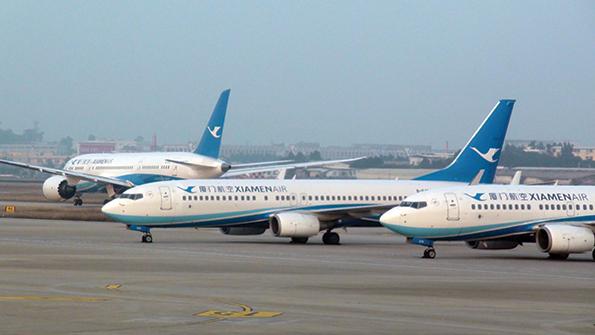新型コロナウイルスによる航空輸送の長いアップサイクルの劇的な幕切れ

航空輸送業界にとって驚異的な10年間でした。それは、通常連動する世界のGDPよりずっと急速に拡大してきました。循環は過去の現象であると反論する者さえいます。なぜなら成長期間が、これまで経験してきたよりもずっと長かったからです。主にアメリカの航空会社など、実際に利益を上げ始めた業界もあります。そして、AirbusとBoeingは前例のない規模の受注残高を築き上げてきました。
サイクルはもはや存在しないという考えは常に神話でした。代わりに、同業界は、2003年と2004年の重症急性呼吸器症候群(SARS)の影響下で経験した以上の、数十年間にわたる深刻な危機の真っただ中にあります。2019年3月以来、Boeingの737MAXの飛行禁止が成長手腕を部分的に阻み、それからアメリカの政治が世界貿易の低迷を引き起こしたので、アジア太平洋間の航空収益は、現在、崖から落ちるのではと予測されています。
新型コロナウイルス感染症の大流行による影響が深刻で多岐にわたり、複雑化しています。そして、壊滅的な被害を被る航空会社もあるでしょう。それらは、MAXによる危機と重なり合い、相反して、時に補完します。皮肉なことに、航空機を保有しないことは、どうにか容量を減らそうとした航空会社にとって有益に転じています。
とりわけ、危機の兆候は、新型コロナウイルス感染症が問題になる数か月前から明らかでした。航空会社のコンサルタント業務を担うAvinomicsの経営担当パートナーであるPhilipp Goedeking氏は次のように書いています。「2019年前半、ほとんどが米中貿易摩擦の衝撃に起因して、それまで考えられていた以上に、中国の主要な国際航空会社にとって強度で反復的なストレス信号が見られた。」「さらに、香港の航空会社は香港民主化デモの副産物によって打撃を受けた。コロナが爆発的に増幅するが、さらに、これらの要素を覆い隠す。」彼の指摘によると、実際、中国における週間搭乗率のピークは大流行以前の2019年10月でした。
新型コロナウイルス感染症の危機から2カ月過ぎても、航空業界とそのサプライヤーに及ぼす経済影響の正確な規模を確実に予測できる者は、誰もいませんでした。国際航空運送協会(IATA)は最初の試算によって、SARSから想定しうるパターンをモデル化しました。その想定によると、新型コロナウイルス感染症は比較的早く抑えられるとのことです。そして、旅行需要減少への懸念から、旅行業界の信頼をできるだけ早急に取り戻します。そのシナリオが現実になり、すぐに—遅くとも次の1、2カ月に、進行を抑える必要があります。
新型コロナウイルス感染症がSARSの先例に倣うという想定すら、もっと悲惨な結果をもたらします。2003年、アジア太平洋路線が5.1%減少しました。IATAは、2020年に8.2%落ち込むと見ています。17年前、中国の航空会社が運航する航空機は、900機未満でした。現在、同国の航空会社は共同運航の航空機を4,000機以上保有しており、絶対的な数から言えば、ずっと大きな衝撃を引き起こします。IATAの想定によると、世界の航空輸送は今年0.6%減少し、2008年から2009年にかけて起きた世界的金融危機以来、初めて同業界は成長をストップさせています。
中国のフライトは急激に悪化してきました。需要の低迷によって、航空会社は今月の運行スケジュールを一時停止してきました。中国国内のデータを提供するVariFlightによると、航空会社は、2月19日、18,300回の運行スケジュールのうち6,300回、すなわち34%の運行を見込んでいました。中国の航空会社5社は運行を停止していませんでした。2月、その数は日を追うごとに変化しています。
Cowenのシニア・リサーチ・アナリストであるHelane Becker氏は次のように書いています。「[Chinese market]輸送の回復に少なくとも1年かかると引き続き考えている。」「輸送が通常状態に戻るのに少なくとも18カ月かかる見通しであるという報告がある。」
以上は、Jens Flottau, Sean Broderick, Bradley Perrett, Adrian SchofieldがAviation Week & Space Technologyに書いた記事の簡略版です。 コロナウイルスの大流行による衝撃や、Hainan AirlinesやQuantasといった航空会社ならびにリース会社が被ったMAX型の飛行禁止については、記事の全文をお読みください。
The air transport industry has had a phenomenal 10 years. It has been growing fast, far more rapidly than the global GDP to which it is normally linked. Some even contended that cyclicality is a phenomenon of the past because the growth phase was much longer than previously experienced. Some in the industry, mainly U.S. airlines, started to actually make proper money, and Airbus and Boeing managed to build up order backlogs of unprecedented sizes.
The idea that cycles no longer exist has always been a myth. Instead, the industry is in the middle of the deepest crisis in decades, deeper than what it experienced during the fallout of the Severe Acute Respiratory Syndrome (SARS) outbreak in 2003 and 2004. Partially hampered in its ability to grow by the grounding of the Boeing 737 MAX fleet since March 2019, then bruised by a U.S. policy-induced slump in global trade, Asia-Pacific airline revenues are now predicted to fall off a cliff.
The effects of the COVID-19 coronavirus outbreak are severe, manifold, complex and could be catastrophic for some airlines. They overlap, contradict and sometimes complement the MAX crisis—an aircraft whose absence, ironically, is turning out to be beneficial to airlines desperately trying to shed capacity.
Notably, signs of crisis were visible months before COVID-19 became an issue. “The first half of 2019 saw strong and repetitive stress signals for the major international Chinese airlines, more severe than previously thought, most likely attributable as an impact of the U.S.-China trade conflict,” Philipp Goedeking, the managing partner of airline consultancy Avinomics wrote. “Hong Kong airlines were additionally hit by the fallout of the protests in Hong Kong. Corona strongly amplified but also masked these factors.” He pointed out that weekly seat capacity in China actually peaked in October 2019, well before the outbreak.
Even two months into the COVID-19 crisis, no one can accurately predict the true dimension of the economic consequences for the airline industry and its suppliers. The International Air Transport Association (IATA) has made its first estimates, modeling assumptions on the pattern from SARS. That assumes COVID-19 will be under control relatively fast and that confidence in travel revives as quickly, as fear of travel has reduced demand. For that scenario to become a reality, progress in containment has to be made soon—in the next 1-2 months at the latest.
Even assuming COVID-19 will follow the SARS precedent, its consequences are much worse. In 2003, Asia-Pacific traffic declined 5.1%. IATA says it could fall by 8.2% in 2020. Seventeen years ago, Chinese airlines operated less than 900 aircraft. They now have a combined fleet of more than 4,000, leading to a much bigger impact in terms of absolute numbers. IATA assumes global air traffic could fall by 0.6% this year, the first time the industry is not growing since the 2008-09 global financial crisis.
In China, the flight reductions have been extremely dramatic. Due to lack of demand, the airlines have suspended most scheduled flights this month. On Feb. 19 they expected to operate 6,300, or 34%, of the 18,300 flights in their schedules, according to local data agency VariFlight. Five Chinese airlines were not operating. That number has varied day to day in February.
“We continue to believe it will take at least one year for [Chinese market] traffic to rebound,” wrote Helane Becker, a senior research analyst with Cowen. “We have some reports that suggest it will take at least 18 months for traffic to return to normal.”